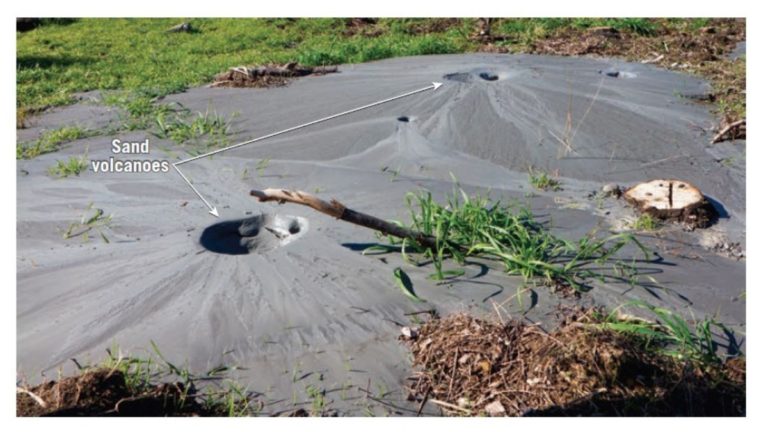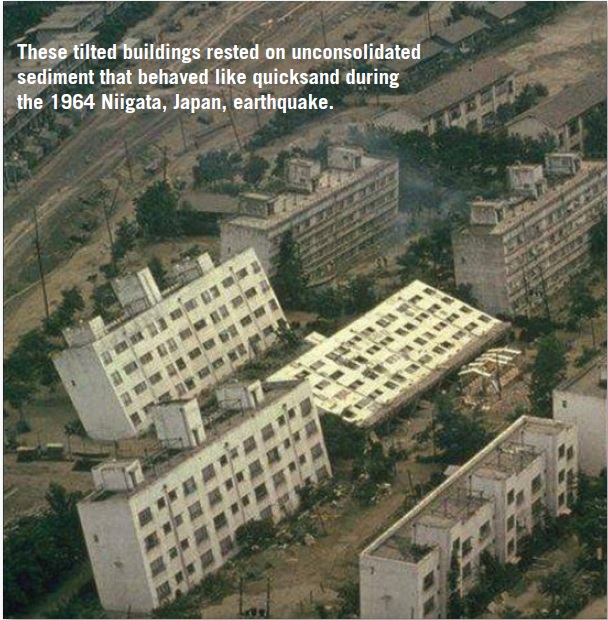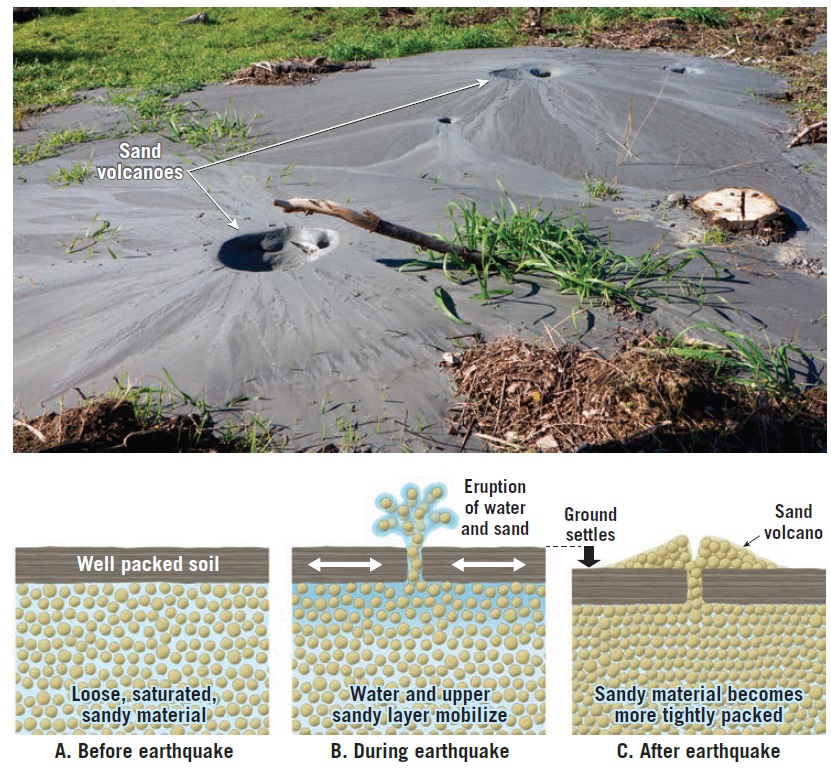What is liquefaction?

The phenomenon of transforming a somewhat stable soil into mobile material capable of rising toward Earth’s surface is known as liquefaction.
Liquefaction (also spelled liquifaction) is another way earthquakes can do damage. Its most common definition means to turn a gas or solid into a liquid, which is close to what happens in certain areas during an earthquake. The shaking ground causes the soil to lose strength and stiffness. The types of sediments most susceptible are clay-free deposits of sand and silts; occasionally, even gravel liquefies. Most of the time, liquefaction occurs in water-saturated soils, either by heavy rains or in a high groundwater area.
In stable conditions, low water pressure is usually exerted on the soil particles, But when the quaking starts, the water pressure increases to a point where the soil particles begin to move with respect to each other. Thus, a semi-solid soil becomes like a viscous liquid. This motion can cause the ground to settle, slide, or move, causing destruction to structures sitting on top of the soils (including houses, highways, and dams) or even underground (cables, wires, and pipelines). In addition, a liquefied sand layer can shoot to the surface through cracks, forming a sandblow or sandboil and depositing a characteristic lens of sand on the ground with a volcano-like vent in the center.

During the 1989 Loma Prieta earthquake, in San Francisco’s Marina District, foundations failed, and geysers of sand and water shot from the ground, evidence that liquefaction had occurred. Liquefaction also contributed to the damage inflicted on San Francisco’s water system during the 1906 earthquake. During the 2011 Japan earthquake, liquefaction caused entire buildings to sink several feet.

Why liquefaction important for construction and infrastructure?
Liquefaction is the process by which soil loses its strength and stiffness, leading to potential settlement or failure of structures built on top of it. This can have significant implications for construction and infrastructure projects, particularly in areas susceptible to earthquakes or other seismic activity.
One important example of the impact of liquefaction can be seen in the damage caused by the 2011 Tohoku earthquake in Japan. The earthquake, which had a magnitude of 9.0, caused widespread liquefaction of soil, leading to the failure of foundations and the settlement of buildings and other structures. This resulted in extensive damage to infrastructure, including roads, bridges, and ports, as well as significant loss of life.
Another example can be seen in the impact of the 2010 Haiti earthquake, which had a magnitude of 7.0. The earthquake caused widespread liquefaction of soil, leading to the collapse of many buildings and other structures. This resulted in significant loss of life and injuries, as well as extensive damage to infrastructure, including roads, bridges, and ports.
To mitigate the impact of liquefaction, engineers and geologists must carefully assess the soil conditions of a particular site and design foundations and other structures accordingly. This may include the use of deep foundations or piles, as well as the use of special soil improvement techniques, such as dynamic compaction or stone columns.
In summary, liquefaction is an important consideration in the design and construction of infrastructure and buildings, particularly in areas susceptible to seismic activity. It can lead to significant damage and loss of life if not properly addressed. Understanding the soil conditions and taking the necessary precautions can help to minimize the impact of liquefaction.
